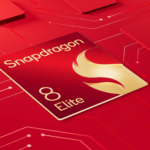
Qualcomm has introduced the Snapdragon 8 Elite, the high-end platform for the next generation of top smartphones. In addition to incredibly high clock speeds of up to 4.32 gigahertz, there are a lot of changes, especially “under the hood”. The goal: finally catch up with Apple. Qualcomm
The Snapdragon 8 Elite is a huge deal for Qualcomm. The new top SoC, manufactured at TSMC on a 3-nanometer scale, is the first smartphone processor from the San Diego manufacturer, in which the new custom cores from the Snapdragon X Elite called “Oryon” are also used in tablets and smartphones. As with PC chips, we now want to set performance standards here too.
This will be made possible primarily by a new, customized CPU design that comes from the same team of former Apple chip designers that Qualcomm brought on board in 2019 as part of the takeover of their startup company Nuvia. With the Snapdragon 8 Elite, the new CPU cores are adapted for use in smartphones and the structure of the chips is significantly changed compared to the previously common concepts.
Unlike last time, for example, only two instead of four high-end cores are used. However, under full load, these achieve a clock speed of up to 4.32 gigahertz, never before achieved in smartphones. Compared to the Snapdragon 8 Gen 3, Qualcomm still packs around one gigahertz into it. At the same time, the number of power-saving cores has now increased to six, with these also running significantly faster than before at up to 3.53 gigahertz.
Apparently it is believed that the number of high-end cores brings sufficient performance increases. Qualcomm promises an increase of up to 45 percent in CPU performance compared to the direct predecessor chip. This has already been evident in the last few weeks based on a series of initial benchmark listings for the Snapdragon 8 Elite. At the same time, the power consumption of the entire SoC should fall by around 27 percent.
Qualcomm explains the significant performance gains not only with the CPU architecture, which is up to 44 percent more efficient, but also with the integration of 12 megabytes of Level 2 on each of the two core clusters consisting of two and six cores. Dual-channel LPDDR5X memory with 5300 MHz is also supported.
There are also said to be enormous performance gains for the GPU, with Qualcomm promising an increase of up to 40 percent, while ray tracing performance is said to have increased by 35 percent. All information about performance improvements should of course be viewed with caution, but Qualcomm expressly refers to Geekbench tests in comparison with smartphones from the previous generation currently available on the market, such as the Samsung Galaxy S24 Ultra.
The Adreno 830, as the new graphics unit is called (although Qualcomm officially only speaks of an Adreno GPU without giving a model number), is said to consist of so-called “slices”, each running at 1.1 GHz and increasing or increasing as needed can be switched off. A total of three “slices” should deliver more than enough graphics performance at any time.
Of course, the Snapdragon 8 Elite, whose internal model number is SM8750 while the code names “Sun” and “Pakala” were used, is also supposed to outperform its predecessor in terms of AI performance. The promise is that it offers up to 45 percent more NPU performance with a view to completing AI workloads on the respective end device itself.
The AI functions also affect image processing and, in conjunction with an optimized architecture, are intended to ensure significantly faster processing of photo and video data. Thanks to “unlimited segmentation”, AI can be used to recognize various elements of image motifs and process them in an optimized manner. Of course, the chip’s additional features also include other things such as a Snapdragon X80 5G modem, which should also be ideal for operation in standalone networks and supports communication via satellite.
WiFi 7 and UltraWideBand (UWB) are also supported. According to Qualcomm, various new top smartphones from brands such as Asus, Honor, iQOO, OnePlus, Oppo, RealMe, Samsung, Vivo and Xiaomi will be presented in the next few weeks, which will be equipped with the Snapdragon 8 Elite. In fact, various Chinese manufacturers are likely to present corresponding devices within the next few days or hours.
Research Snipers is currently covering all technology news including Google, Apple, Android, Xiaomi, Huawei, Samsung News, and More. Research Snipers has decade of experience in breaking technology news, covering latest trends in tech news, and recent developments.